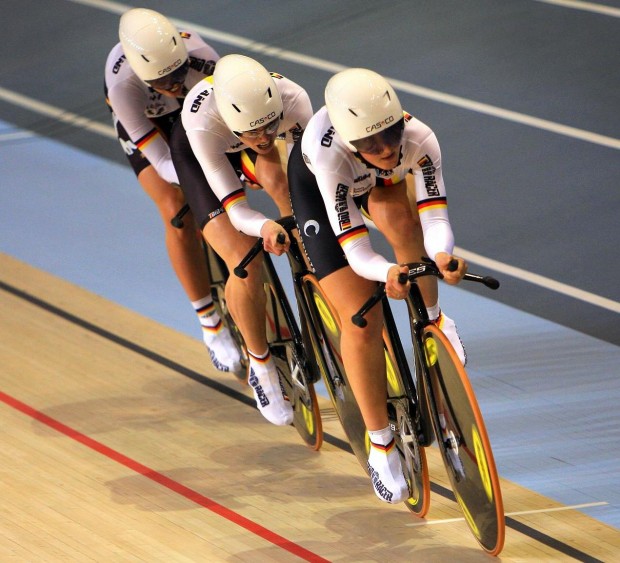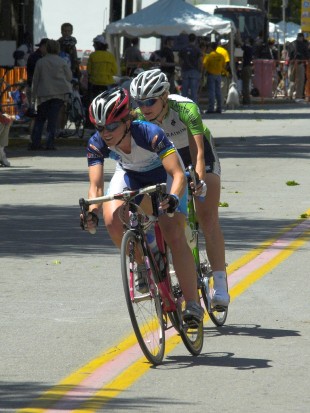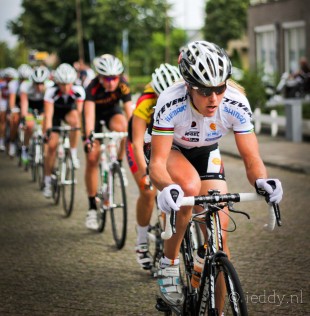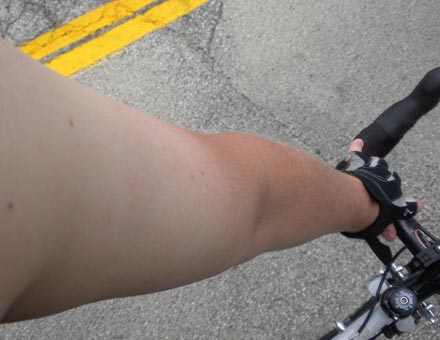Following a wheel – sitting closely behind another rider to get the benefit of their slipstream – is a vital skill if you want to ride with others. Jo McRae shows you how.
Prefer your info bite-sized? Try 10 Things You Need to Know About Drafting

Whatever name you give to leading or following another rider, these important skills are well worth getting to grips with if you want to maximise your enjoyment of riding out on the road. Understanding the concepts and knowing how to practice them can bring enormous benefits physically, but also can raise the fun factor and camaraderie of your cycling which can sometimes be a very solo pursuit.
If you want more cycling buddies, getting good at this stuff is very useful.
Following a wheel, ‘sitting in’, drafting, ‘wheel sucking’, giving someone a tow, leading out…
The colloquialisms that pepper cycling stories are full of references to leading and following with both negative and positive connotations. The implication is usually that if you are a ‘follower’ you are lazy and don’t want to do any work, while if you are the leader for too long you are either a heroine for ‘leading out’ and sacrificing yourself for another, or some kind of donkey without the brains to use your efforts more wisely. In fact it can be really useful to be able to both lead and follow for everyone’s benefit in a group ride or with the aiming of winning a race – or helping a team-mate to win.
Following

Being able to ‘draft’ or closely follow another rider is the stand out difference between a beginner and a more skilled rider. The scientific principles are pretty basic. Sitting closely behind another rider, you are sheltered and no longer pushing against the wind, but are literally being ‘carried’ along by the air pocket created behind. This can save you between 20 and 40% of your energy expenditure, depending on how close you are, how fast you are riding how strong the wind is.
This saving can help you to get somewhere faster and easier, or over longer distances it can save you the energy that can help you to go further.
Learning to feel relaxed and comfortable riding close to another rider can take a little time, but most of all it takes conscious practice. As a starting point you will get some tangible ‘draft’ by sitting half a wheel’s width behind another rider, and this will allow some comfortable adjustments for change of direction and speed.
Keep your head up
Don’t stare down at the wheel in front but judge your distance by the back of the rider ahead; using your peripheral vision to look out for any changes that might be approaching. Occasionally you may check your wheel distance but you are aiming to develop a sense of how close you are so you can make minor adjustments without looking down.
Use your pedalling pressure to adjust your speed and therefore distance, avoiding sudden shoves on the pedals and instead riding smoothly in circles making subtle adjustments to your effort. Try not to use your brakes, but if you do use them, try to ‘feather’ them gently rather than pull them on so suddenly that you fall back off the wheel more than you want.
Over time and as you develop confidence you can work your way closer to the wheel in front if you feel comfortable and are following another trusted or experienced rider. If you force yourself to sit closer than you can manage to start with you will begin to ride erratically, and probably become over-anxious, rather defeating the object of saving energy.
Leading

Leading another rider safely and smoothly equally deserves practice and is not that easy to do well. With someone riding closely behind you have a responsibility to keep them safe too, which means no sudden braking, or change of direction that might cause them to touch your wheel. It is no more enjoyable to have someone crash into the back of you than someone suddenly stop in front, so the golden rule is to keep everyone safe first, even in a competitive situation.
If you are supporting a rider who is not as strong as you or is more fatigued it can be easy to exhaust them and make it difficult for them to follow if you change your pace too quickly. For example if you offer someone a wheel to help them out, once they are comfortable behind give them some time to recover and settle into their rhythm before increasing the pace again.
If you come to a climb then be aware that as the weaker/more tired rider they are likely to ‘get dropped’ or be unable to keep up if you push too hard, which is all too easy to do. Instead, accommodate them by changing down more gears than you normally would, and if anything reduce your effort a little more.
As you change gears and/or transition from seated to standing and vice versa make sure that you keep even pressure on the pedals and do not pause by stopping pedalling momentarily. If the rider behind is following you closely this may cause them at worst to run into your back wheel.
Get practising
One of the best ways to practice leading and following is with a riding buddy of a similar ability. With a trusted friend you know that you are both aiming to achieve the same thing and you can have confidence in developing a smooth and safe ride. Once you have the basics mastered you can take your new found skill into the big wide world of sportifs, racing or simply your daily commute.
There is nothing more enjoyable than hopping onto a passing wheel to get that extra ‘ride’ into work, and equally if you offer another rider a helping hand you can be sure that this cycling karma will come back to you sometime when you need it the most.





